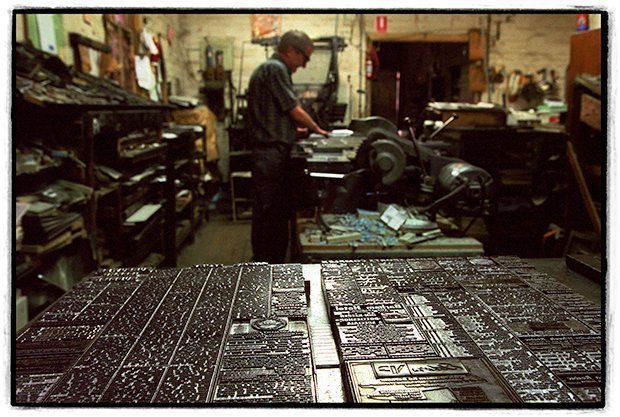GALLERY: Hot metal printing & the rural press

JOURNALISTS WHOSE CAREERS began during the hot-metal printing era fondly recount how their buildings shook when the solid steel presses weighing over several ton each began churning out copies of their daily or weekly publications. Fact is, the rumbling seldom ceased.
Every Monday Graeme Millar’s morning task at The Bridge of Koondrook and Barham, Victoria, was to melt down the previous edition’s lead plates at 300ºC and pour them into ingot moulds.
Once cooled, they were fed in to a Heidelberg Platten linotype machine, operated by Graeme’s colleague, Peter Miller. Right up until the Thursday afternoon deadline, Peter typed away on a keyboard configured unlike any typewriter, producing lines of reverse lead type. The lines of lead words were laid out on a solid steel block to be printed on an 1897 Miehle printing press.
Historic printing methods
The Bridge went digital in 2004. The Winchelsea Star, in Victoria, is now printed on a photocopier. Just one newspaper in Australia still uses hot metal technology today – the 103 year-old Don Dorrigo Gazette in NSW.
For 53 years Alan Smith operated the typesetter while publisher John English took care of the printing. Sadly Alan’s career ended when he passed away in 2011, while John, who began working as a compositor there in 1961, passed away late last year. However, his son Michael has kept the paper’s history, and historical methods, alive.
The move to computers has meant fewer staff at most newspapers – rural and metropolitan – although the Buloke Times still provides employment for a dozen local people at its historic premises in Donald, Victoria. And its sales are up, too, with 1650 copies printed twice each week.
Find the full story about Australia’s booming rural press and the people behind the newspapers in issue 115 (July/Aug) of the Australian Geographic journal.
|
|
 |
RELATED STORIES


